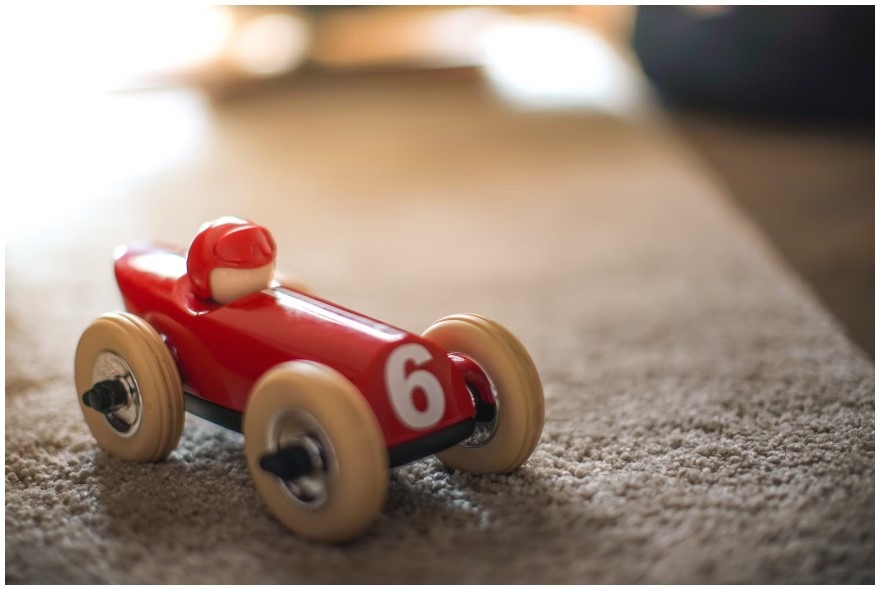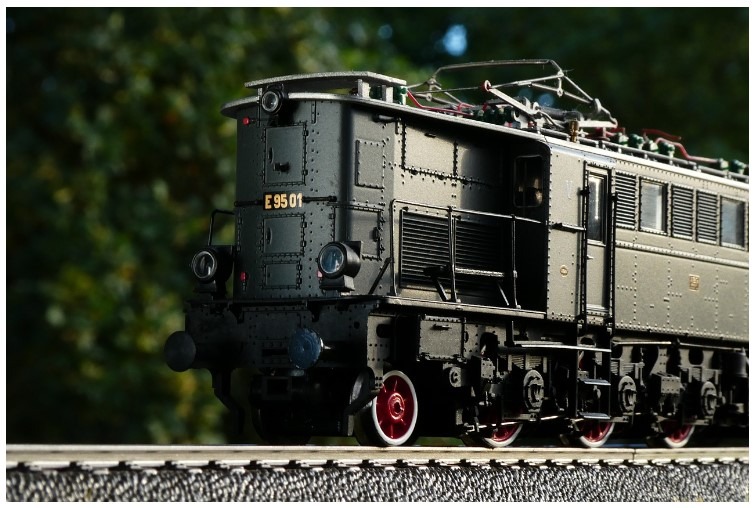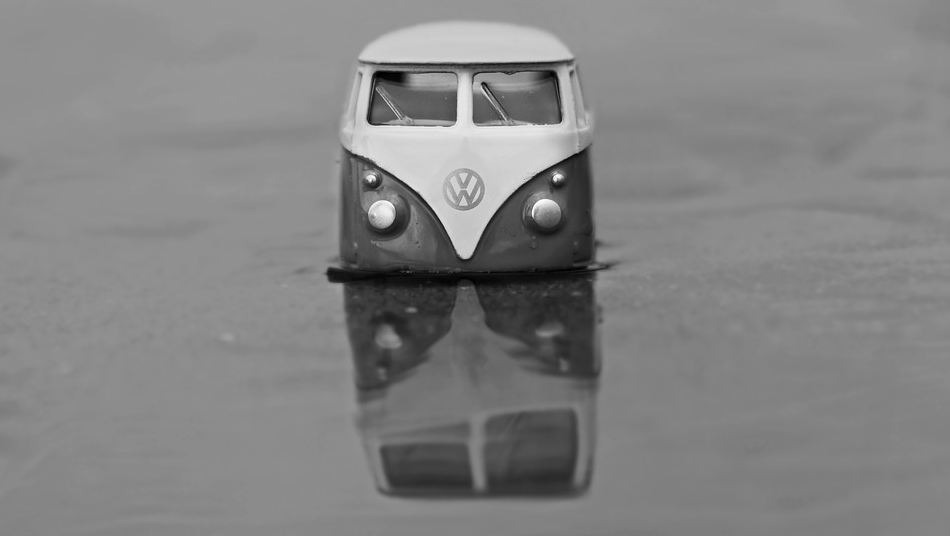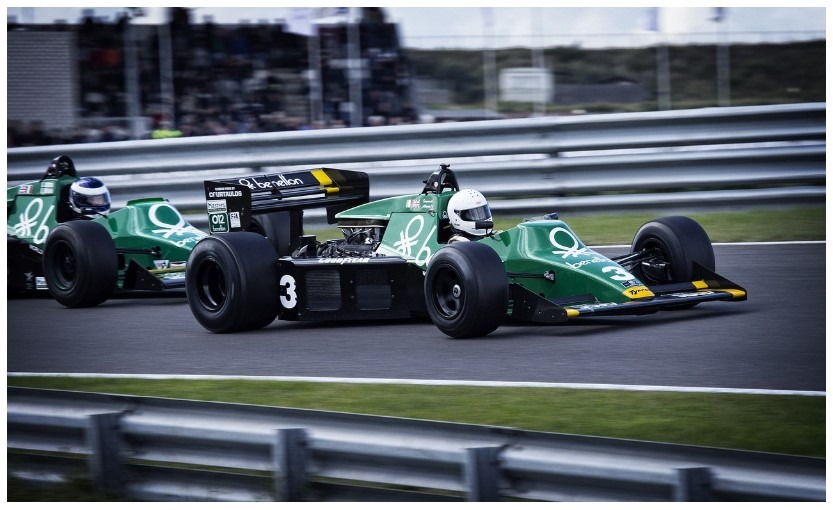Ways to Use Making Model Cars as an Educational Tool
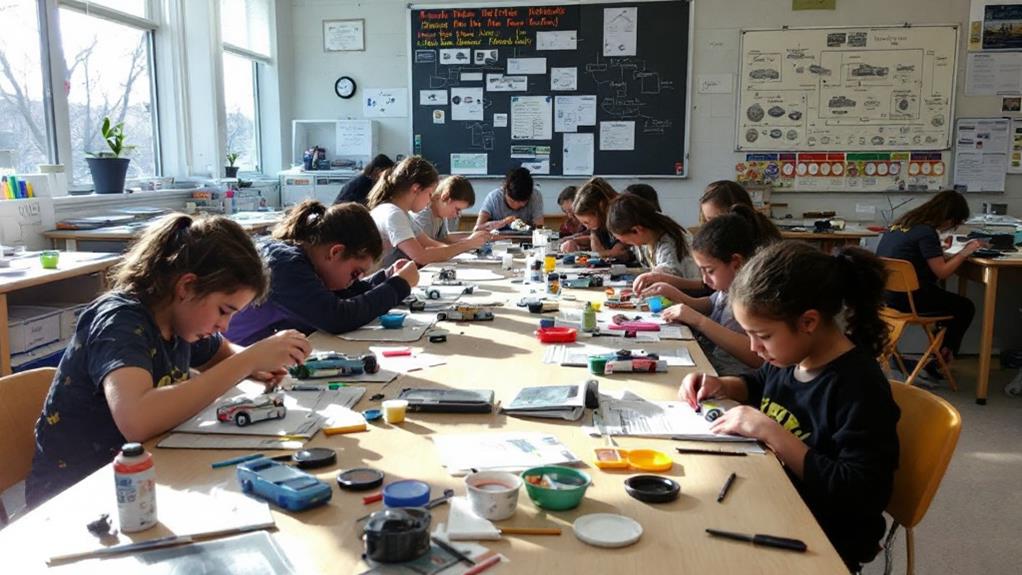
Building model cars is a fun and engaging way to teach kids various educational concepts. You'll help them investigate basic math skills, understand physics principles, and develop fine motor abilities. It's a great opportunity to enhance creativity and design thinking while introducing engineering and mechanics. Through this hands-on activity, you can nurture problem-solving techniques and encourage teamwork. You can even incorporate environmental awareness by using recycled materials. B
y guiding children through the process of creating miniature vehicles, you'll provide a multifaceted learning experience that spans numerous disciplines. Uncover how this hobby can drive your child's education to new heights.
Exploring Basic Math Concepts
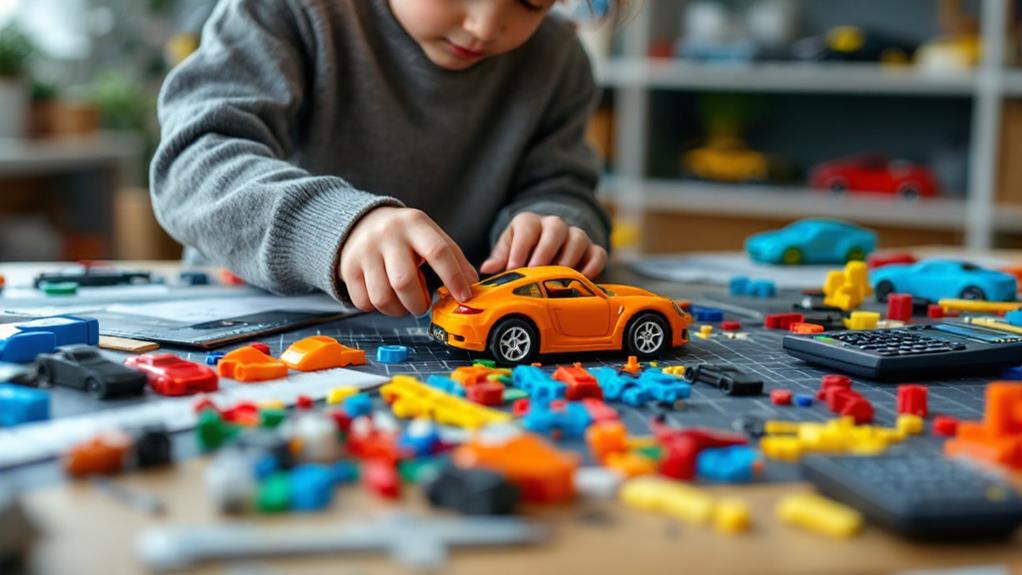
While model car building might seem like a purely recreational activity, it's actually a fantastic tool for exploring basic math concepts. As you guide your child through the process of assembling model cars, you're providing them with hands-on learning opportunities that reinforce essential math skills.
Start by using the model cars to practice basic counting, sorting, and patterning. Have your child group cars by color, size, or other attributes, encouraging them to recognize similarities and differences. This activity lays the foundation for more complex math concepts later on.
As you move into the construction phase, introduce measurement ideas by having your child cut, glue, and assemble parts. This process naturally develops their spatial reasoning abilities.
You can also create simple math activities using the finished models. Line up cars to compare lengths or count the number of wheels, reinforcing numerical understanding and basic addition and subtraction skills. Following step-by-step instructions during assembly helps develop critical thinking and problem-solving skills, which are pivotal for early math learning. By engaging in these activities, you're not only making math fun but also inspiring curiosity about STEM subjects and cultivating a love for learning.
Understanding Physics Principles
Model car building's educational value extends far beyond basic math concepts. When you engage children in creating toy vehicles, you're introducing them to a world of physics principles. As they construct and experiment with their toy cars, they're unknowingly exploring concepts like force, friction, momentum, and gravity.
Encourage your young builders to try different car designs, wheel sizes, and materials. These learning activities help demonstrate how changes affect a car's speed, acceleration, and stopping distance. By constructing ramps and tracks, children apply their understanding of inclined planes and observe how slope influences a car's motion.
Modifying the weight distribution in toy cars allows kids to see how center of mass impacts stability and handling. Let them test their creations on various surfaces to recognize how factors like roughness affect rolling resistance and friction. These hands-on experiences with toy cars provide tangible examples of physics concepts in action.
As children refine their motor skills through building and testing, they're simultaneously developing a deeper understanding of the physical world around them. Model car projects offer an engaging way to introduce complex physics principles in a fun, accessible format.
Developing Fine Motor Skills
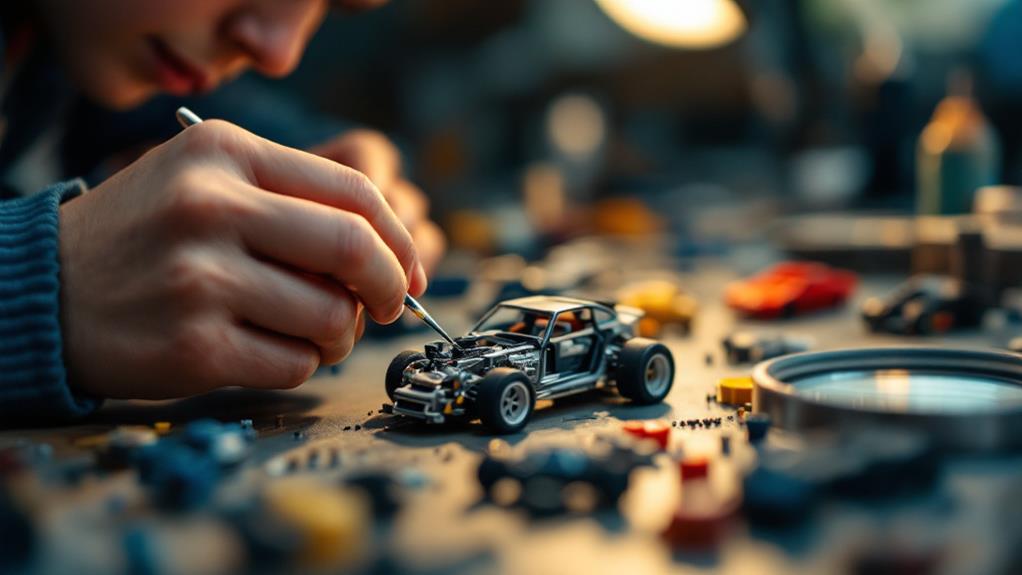
Children's fine motor skills receive a significant enhancement through model car building. This hands-on activity offers a unique opportunity for young learners to develop vital abilities that will benefit them in various aspects of life. When using toy cars as educational tools, you're providing a fun and engaging way for children to improve their dexterity and coordination.
- Manipulating small parts and tools
- Applying decals and intricate details
- Using specialized tools like tweezers
- Practicing pincer grip and precise movements
As children work on assembling toy cars, they're strengthening the muscles in their hands and fingers. The process of snapping together tiny components requires precise movements, enhancing their overall motor control. You'll notice improvements in their ability to handle everyday tasks as they progress in their model car building skills.
The use of specialized tools, such as tweezers and glue applicators, further refines their fine motor abilities. By engaging in this enjoyable activity, children are unknowingly developing essential skills that will serve them well in various aspects of their lives, from writing and drawing to more complex tasks in the future.
Enhancing Creativity and Design
Imagination soars when children engage in model car building. This creative activity allows kids to explore their design ideas while learning about vehicles and engineering concepts. When you encourage your child to make model cars, you're providing a platform for them to express their artistic vision and problem-solving skills.
Start by introducing your child to the world of toy cars and model-making activities. Let them experiment with designing unique car styles, colors, and features. This process enhances their creativity and spatial awareness as they work to bring their ideas to life. You can offer pre-made model cars for decorating with paints, stickers, and other materials, allowing your child to customize their creations and showcase their artistic talents.
For a more advanced learning experience, consider using model car kits. These activities challenge children to assemble various components, further developing their problem-solving abilities. As they complete their projects, display the finished model cars to cultivate a sense of achievement and fulfillment. This positive reinforcement motivates children to continue investigating their design and engineering skills, making model car building an excellent educational tool for enhancing creativity and design thinking.
Learning About Engineering and Mechanics
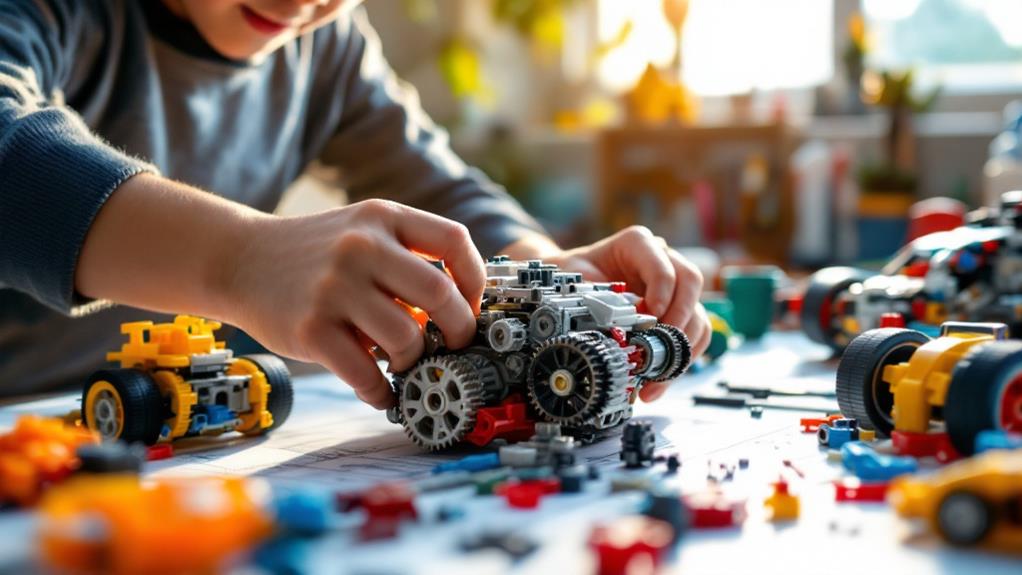
Delving into the world of engineering and mechanics, model car building offers children a hands-on approach to understanding complex principles. As young learners construct their miniature vehicles, they're exposed to the basic concepts that drive real-world automotive design and performance. This process helps children develop critical thinking and problem-solving skills while exploring the fascinating domain of engineering and mechanics.
When using model cars as an educational tool, you'll find that it:
- Introduces fundamental engineering concepts
- Encourages experimentation and innovation
- Teaches the importance of precision and attention to detail
- Cultivates an understanding of cause-and-effect relationships
Practicing Problem-Solving Techniques
Through the process of building model cars, young enthusiasts can hone their problem-solving skills in a practical and engaging way. This DIY toy car activity challenges children to analyze issues, identify solutions, and test their ideas through an iterative design process. As kids love tinkering with their creations, they're encouraged to think critically about factors like weight distribution, aerodynamics, and materials to improve their car's performance.
When troubleshooting issues during construction, such as misaligned parts or structural weaknesses, children develop resilience and persistence. The hands-on nature of this engaging activity provides opportunities to practice spatial reasoning, fine motor skills, and attention to detail. You can even introduce simpler versions of this concept using a piece of paper to create origami cars or Play Dough to mold basic vehicle shapes.
Modifying and customizing model car designs allows children to apply their problem-solving abilities to create unique and innovative solutions. By encouraging them to experiment with different materials, shapes, and designs, you're nurturing creativity and critical thinking skills that will serve them well beyond this car activity.
Fostering Teamwork and Communication
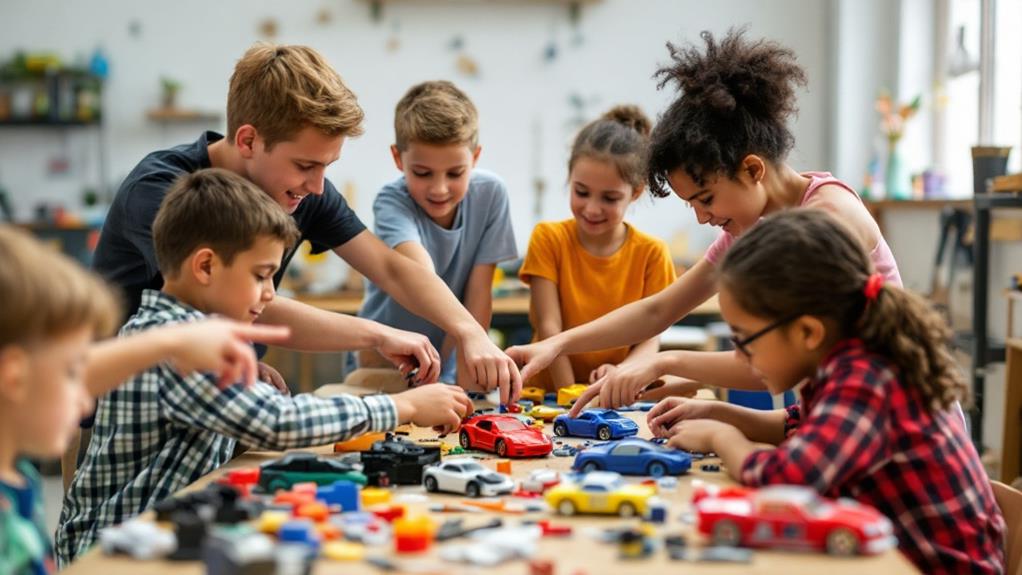
While model car building is often seen as a solitary activity, it can also be a powerful tool for promoting teamwork and communication skills. By engaging in collaborative car activities, children and adults alike can develop essential interpersonal abilities.
Here are four ways you can use toy cars to encourage teamwork and communication:
- Organize relay races where team members pass toy cars to each other
- Create a cardboard city with a parking lot for toy car parking
- Build a multi-level garage or racetrack using household items
- Play car-themed board games or competitive activities
These car activities encourage participants to work together, share ideas, and solve problems collectively. For instance, constructing a toy car wash requires planning and coordination, while maneuvering cars to drive through a cardboard city promotes spatial awareness and cooperation. As you engage in these projects, you'll find that cars can be used to enhance verbal communication, develop empathy, and work towards shared goals. By incorporating these collaborative experiences into your model car building sessions, you'll create an environment that nurtures teamwork and effective communication, preparing participants for real-world challenges and interactions.
Incorporating Environmental Awareness
Model car building offers a unique opportunity to incorporate environmental awareness into educational activities. You can make learning fun by repurposing everyday materials like cardboard boxes, plastic bottles, and aluminum cans to create eco-friendly toy cars. This hands-on approach teaches children about sustainability and waste reduction while they use different colors and materials to craft their vehicles.
To drive their cars towards a greener future, incorporate discussions about transportation's environmental impact. Talk about emissions and fuel efficiency to raise awareness about climate change and encourage eco-conscious choices.
Research and use recycled or biodegradable materials in the model-making process, highlighting the importance of responsible consumption.
The best part? You can organize a model car competition focusing on minimizing environmental footprints. This inspires children to think critically about design, materials, and energy efficiency. Pair these activities with lessons on renewable energy sources like solar or electric power to educate kids about alternative transportation solutions.

